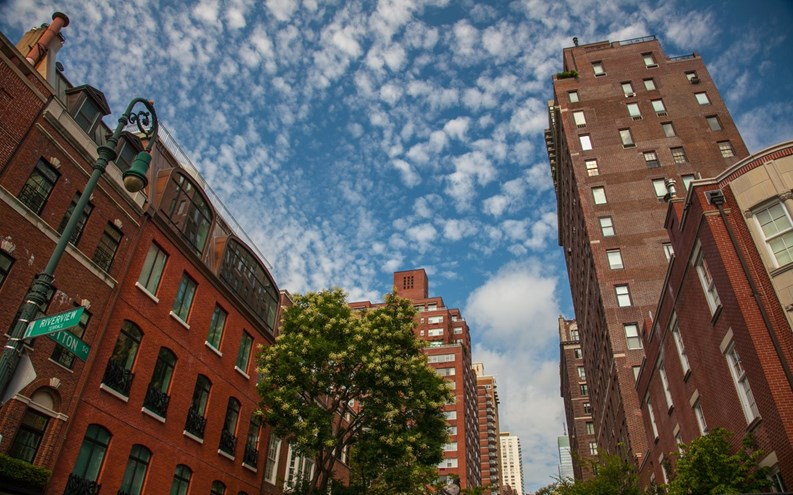Condominium buildings can anchor a block, or serve as a hub for community - at least theoretically. And why not? They're communally-run residential dwellings where neighbors must co-exist in close quarters. But on opposite sides of Manhattan, two condo tower projects that have been in the news recently have neighborhood organizations up in arms, rather than rolling out the welcome wagon.
200 Amsterdam
At 200 Amsterdam on the Upper West Side, developers SJP Properties and Mitsui Fudosan will proceed with their 668-foot, 51-story, 112-unit project after getting the green light from the city's Board of Standards and Appeals in mid-July. The BSA stepped in after the project’s approval by the Department of Buildings was challenged last April by the Committee for Environmentally Sound Development. The advocacy group alleged that the zoning lot for the property – which they claim was 10 times the size of the actual project footprint and took the shape of a complex, many-sided polygon – was illegally stitched together.
Despite receiving the support of heavy hitters like City Councilwoman Helen Rosenthal and Manhattan Borough President Gale Brewer, the group's challenge was defeated, and the project will continue as planned. The excavation was completed, the foundation work is in progress, and the project's sales representative, Brown Harris Stevens, hopes to launch as early as this fall.
But according to the Municipal Art Society - another advocacy group involved in the challenge to the project - the opposition has not yet conceded defeat and is currently plotting its next steps.
Sutton 58
In what appeared to be another win for development, the BSA granted developer Gamma Real Estate a six-month extension in late June to finish building the foundation of its 800-foot, 67-story Sutton 58 project in the Sutton Place neighborhood of Manhattan’s East Side.
Construction had halted in December after the City Council passed a regulation limiting height on new building construction in the zoning area from 52nd and 59th streets between First Avenue and the East River. At the time, Gamma was scrambling to lay the foundation prior to the regulation being voted on, which would have allowed it to continue building the tower unhampered by height restrictions. Despite the firm being unable to meet that benchmark, the BSA's recent decision allows Gamma to stay the course for now.
The East River Fifties Alliance, a neighborhood collective organized at the onset of the project two years ago solely to stop its construction, intends to appeal the BSA decision with the state Supreme Court, in hope that the ruling is overturned. In a quote provided to Crain's New York Business, Lisa Mercurio, communications director for the organization, referred to the dust-up as a 'who is New York for?' issue. “New York is under siege with respect to over-development,” she said.
Should Sutton 58 reach its completion, it will reportedly be twice as high as the current tallest building in that area, so the outcome of this fight may have ramifications that go far beyond a single project.
Mike Odenthal is a staff writer at The Cooperator.







Leave a Comment